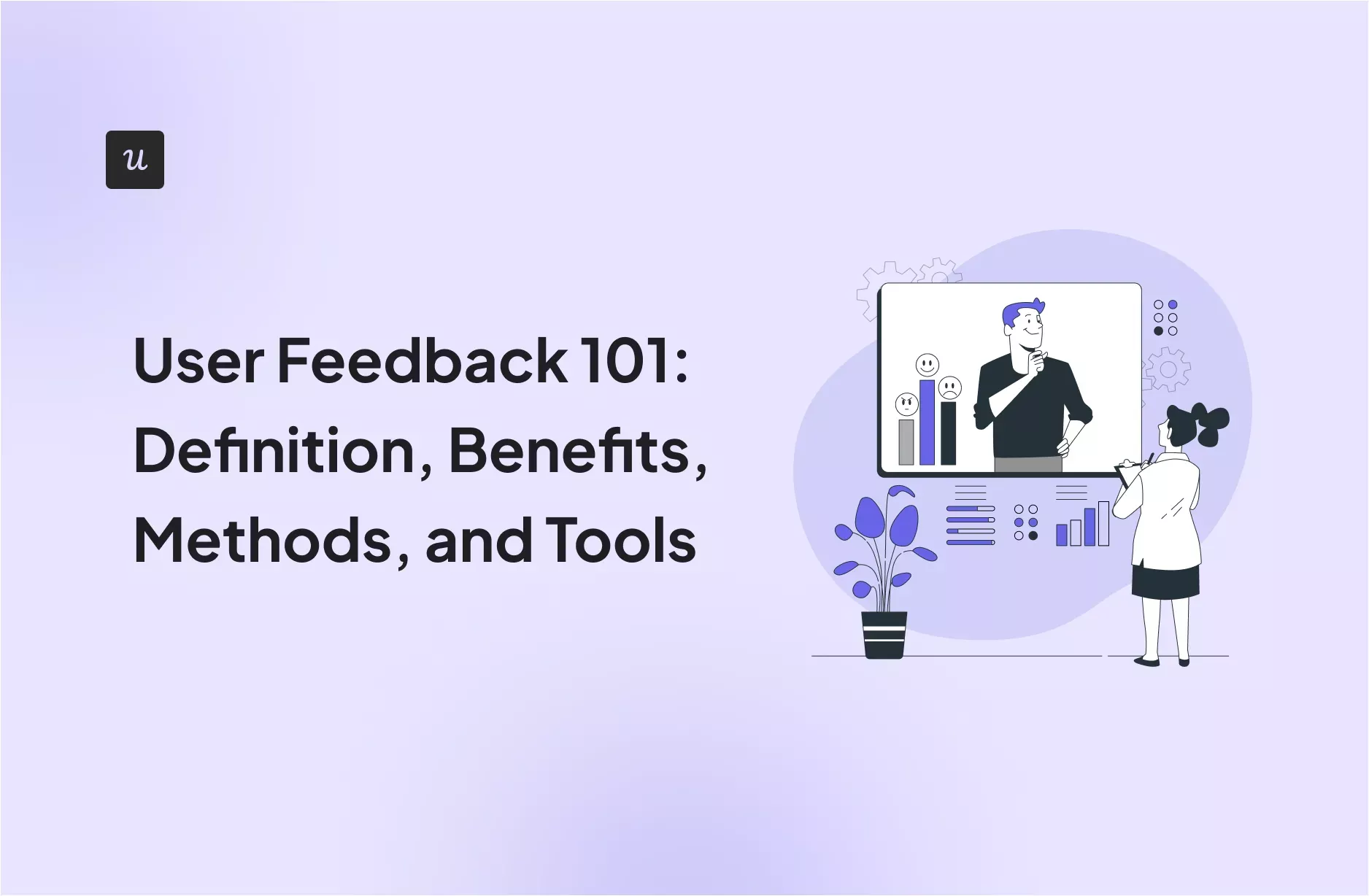![How To Ask for Customer Reviews? [Different Ways, Best Practices & Tools Included] cover](https://blog-static.userpilot.com/blog/wp-content/uploads/2022/09/How-To-Ask-for-Customer-Reviews_4d2ccbf35d5e0e4acb6a6eeb9ab8662c_2000.png)
How To Ask for Customer Reviews? [Different Ways, Best Practices & Tools Included]
Try Userpilot Now
See Why 1,000+ Teams Choose Userpilot

What is a customer review?
Customer reviews describe how customers feel about your products or services. The response can be positive, negative, or neutral.
The most common forms of customer reviews are texts, videos, numbers on a rating scale, or stars.
Why should you ask for a customer review?
Here are three reasons why you should always ask for reviews.
Improve your product quality
When you read through customer reviews about your product, you can identify customer pain points, friction points along the user journey, and technical glitches.
Remember that each negative review might have a key insight that can improve your product’s overall quality and provide greater value to your users, while each positive review reassures you about your product’s best aspects.
Help potential customers find positive reviews
In the absence of trusted personal recommendations, 85% of consumers put their faith in online reviews, and according to HubSpot, 60% of consumers believed that customer reviews were either very trustworthy or trustworthy.
SaaS businesses can therefore use positive reviews to boost their internet visibility and assist potential customers in their purchase decisions.
Gain competitive advantage
Even a difference of one quality review can make customers choose your competitor over you.
When your product accumulates plenty of positive reviews, you get a competitive advantage as the positive feedback reinforces the popularity and high quality of your products, making customer acquisition easier.
When should you ask for a customer review?
Whenever possible, ask customers for reviews after any interaction, conversation, or sales transaction. This keeps your brand fresh on their minds.
To ensure quality reviews from as many users as possible, you should ask for reviews across different touchpoints of a customer journey. Here are some examples.
After the onboarding phase
When new customers have finished the onboarding process, you should check to see if everything was clearly explained or if they faced any problems.
It is important to remember that during onboarding, a customer has their first interactions with your product, so this is a great opportunity to establish a strong, positive relationship through these seven SaaS customer onboarding practices and improve your activation rates.
Here’s how Hubspot uses an onboarding survey to ask for a review:
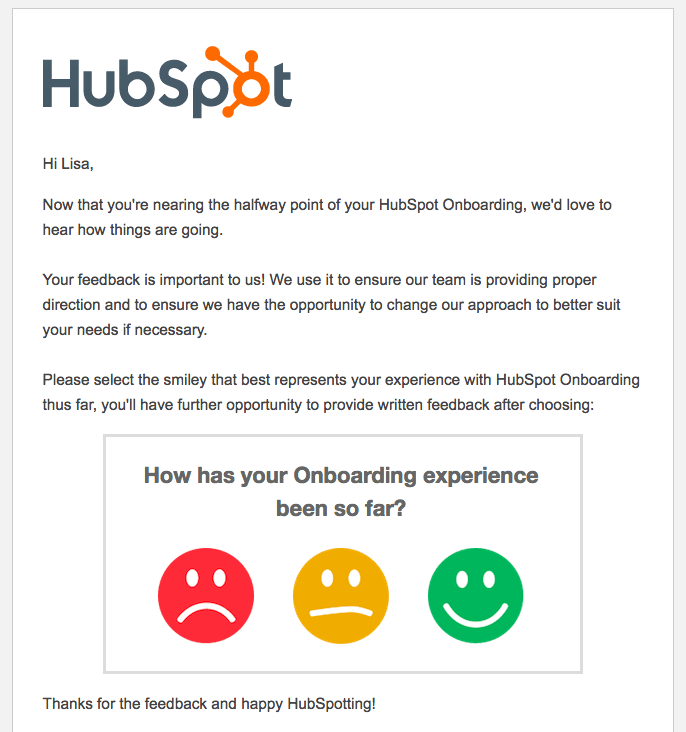
After a new feature release
It is best to ask customers for a review immediately after you release a newly introduced feature. To ensure that the recent changes are helpful, you can ask your customers if they’ve understood how to use newly added features or if they’ve found any bugs.
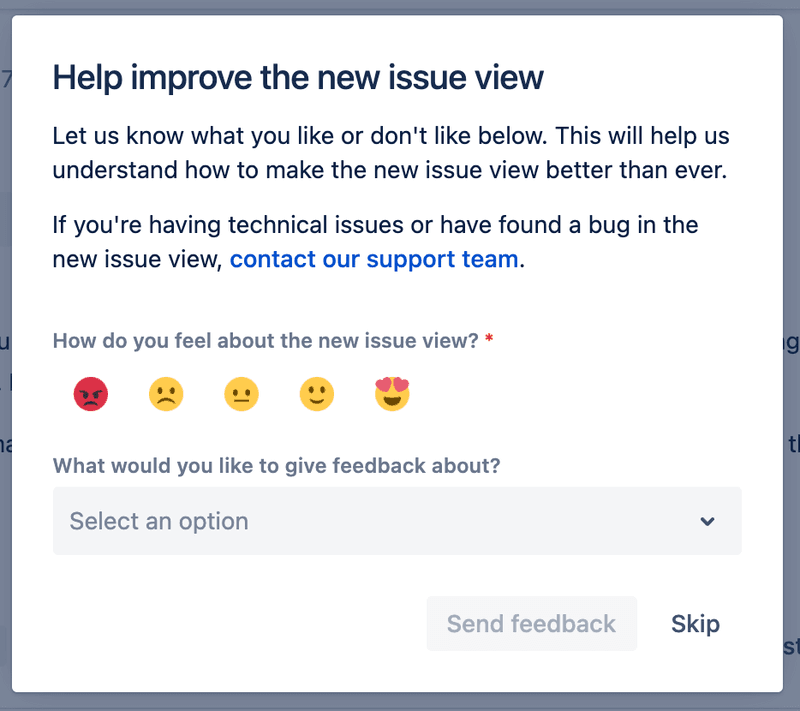
When customers want to churn
User churn is inevitable for SaaS businesses, but it allows you to understand where you went wrong. Identifying these errors and fixing them helps you prevent losing other customers for the same reasons.
When a user is unsubscribing from your product, you can use churn surveys to ask them directly why they want to leave.
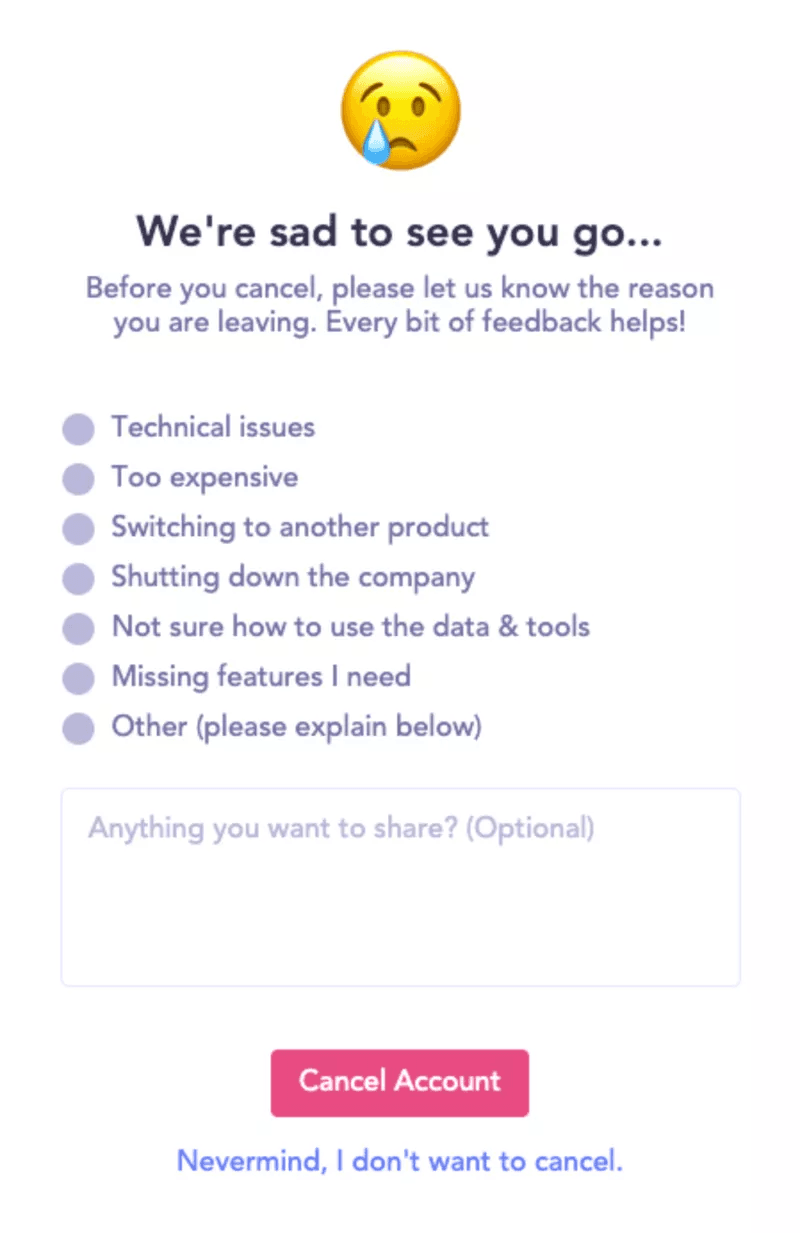
Different ways to ask for customer reviews
You can ask for customer reviews in several ways. The most effective method may differ based on your product and customers, so we suggest experimenting to find which works best for you.
Here are some different ways of sending review requests.
Asking for reviews in-app
Focusing on creating in-app review prompts and prioritizing it will allow you to get many more reviews as users spend significantly more time here than on any other channels.
You should use different UI tools, such as banners, modals, and slideouts, to create different types of engaging customer review surveys, such as CES (Customer Effort Score), CSAT (Customer Satisfaction Score), and NPS (Net Promoter Score).
Here’s how Wise conducts an NPS survey in-app to see whether customers love their product enough to recommend it to others.
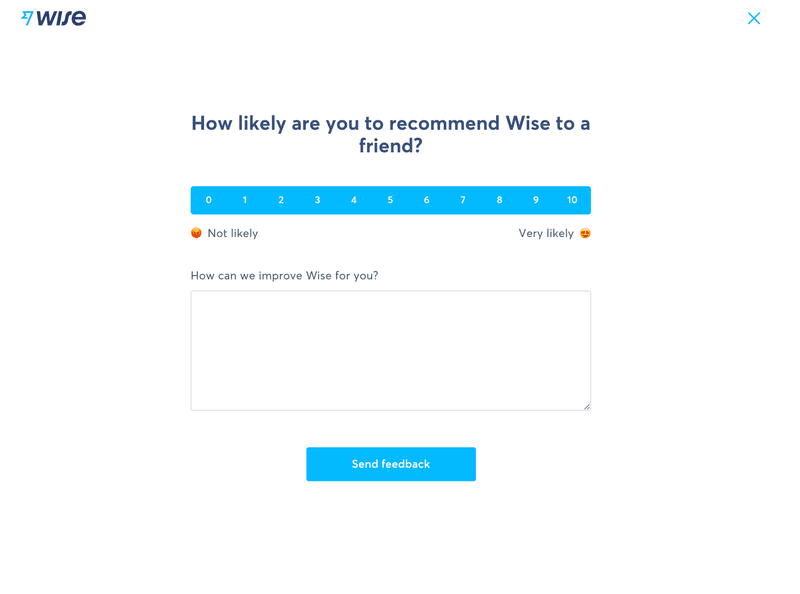
Asking for reviews on mobile
Mobile surveys are a quick way to measure customer satisfaction, gather real-time feedback, and boost engagement.
Customize and launch mobile surveys of different types with Userpilot to gain insights into the app experience.
Asking for reviews via email
SaaS companies frequently use email campaigns to request reviews because they are quite effective and scalable. When you send emails right after a transaction or interaction, they are highly likely to work as they’re still fresh in your customers’ minds.
Remember to personalize the email as much as possible for maximum effect.
Here’s one from Thumbtack.
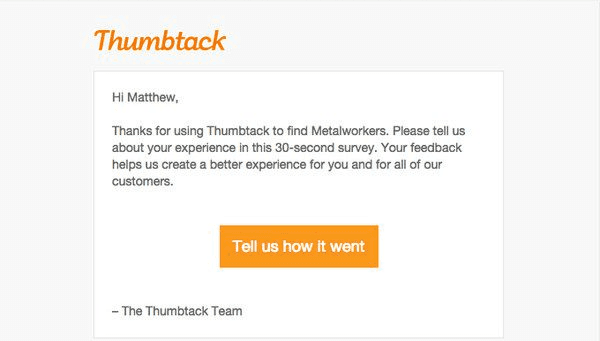
The downside of asking for reviews via email is that they might end up in the spam folder and go unnoticed for a long time.
Asking for reviews over the phone
If your company focuses heavily on customer service, your support team will have lots of opportunities to get customer feedback over the phone.
Phone calls are very personal, so they’re likely to make your customers feel valued and appreciated. This will boost their loyalty and improve the likelihood that they will leave reviews.
Be careful who you choose to ask for reviews, as not everyone is interested in giving their reviews over call. Moreover, you need to get the timing right. Sending a review request after helping customers solve a complicated or lengthy issue is probably not the best course of action.
Here’s a sample:
“Good morning, Samantha! I’m delighted we were able to assist you today, and we truly value your business. We’d appreciate it if you reviewed this experience on [review platform of your choice] if you have the time and don’t mind doing so”.
Asking for reviews in a one-on-one meeting
If you want an honest and transparent review of your products, one-on-one meetings are the way to go. The private setting helps your customers open up to you and provide in-depth feedback.
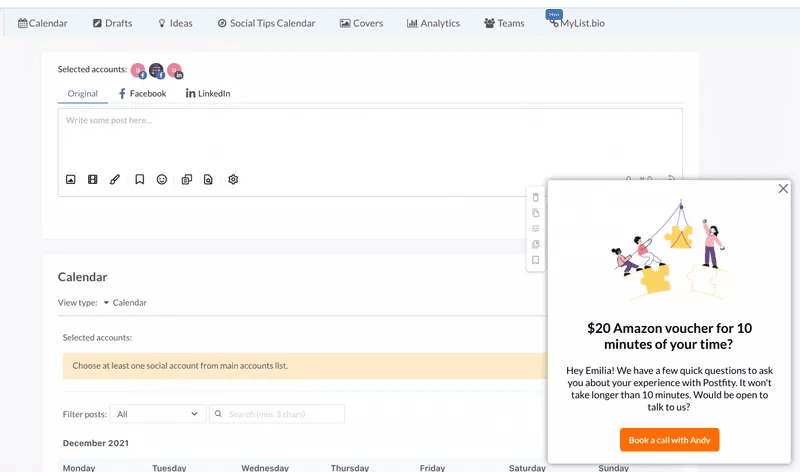
You can also implement the Voice of the Customer (VoC) program to understand your customers clearly. A VoC program is more than just gathering data. It looks into collecting, analyzing, and acting upon individual customer feedback.
Asking for reviews on social media
Customers write reviews in large numbers on social media platforms, making these great places to monitor customer sentiments regarding products, services, and specific features. It only makes sense to leverage the social media platforms and ask for reviews there.
As a SaaS platform, your priorities should be Facebook, Linkedin, and Twitter, as these have a large user base. A good Facebook review can go a long way to attracting new customers and providing confidence to existing customers.
Here’s how Manpower Alberta posts a review request on Facebook.
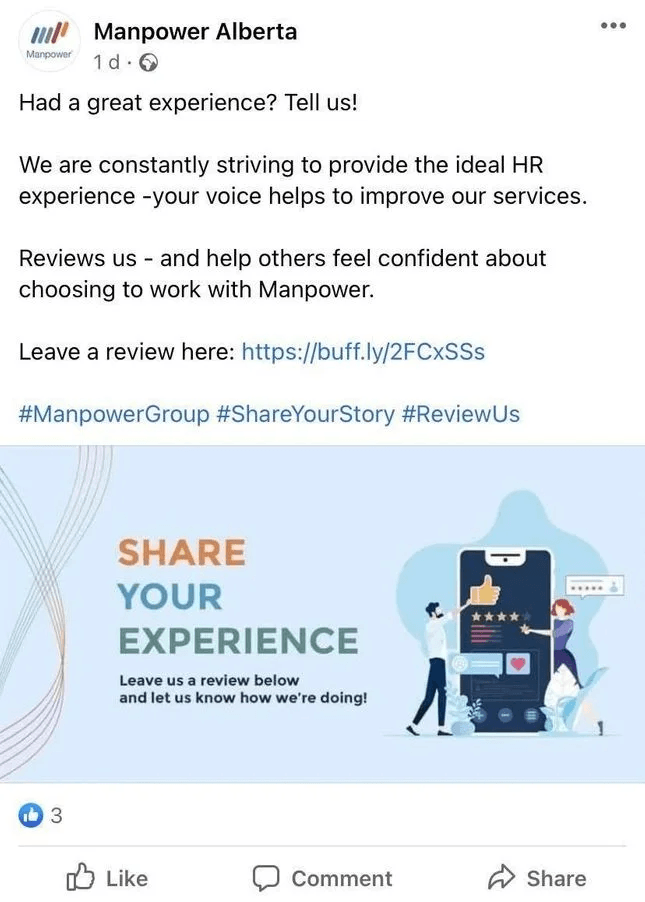
5 Best practices on how to ask for reviews
Here are five best practices to keep in mind when you ask for a review.
Understand your goals
Knowing why you want customer feedback is necessary before you start asking for them. You need to clearly define what you hope to accomplish with new customer reviews. Depending on your goals, you’ll need to deploy different surveys that can accurately measure what you want.
For instance, if you’re primarily interested in receiving feedback on how your company is performing, ask for an overall rating. If you’re looking for reviews on a specific feature, you can conduct a Customer Satisfaction survey (CSAT). Or, if you’re interested in measuring customer loyalty, you’ll need to use an NPS survey.
Your ability to create the best template for customer reviews will depend on your ability to clearly define your aims from the outset. This will guarantee that you gather the most relevant data and improve your chances of success.
Segment customers before sending feedback surveys
If you want to gather relevant and accurate reviews, you need to ask the right questions to the right user groups.
Let’s say that you recently introduced a new feature and want feedback on it. Will you ask all the customers for reviews directly? A better way would be to set up your surveys in such a way that they’ll pop up to only those who’ve engaged with the feature.
Userpilot’s advanced segmentation feature lets you accomplish exactly this. It helps you monitor, track, and group users who fulfill certain criteria, increasing the effectiveness of your review request campaign.
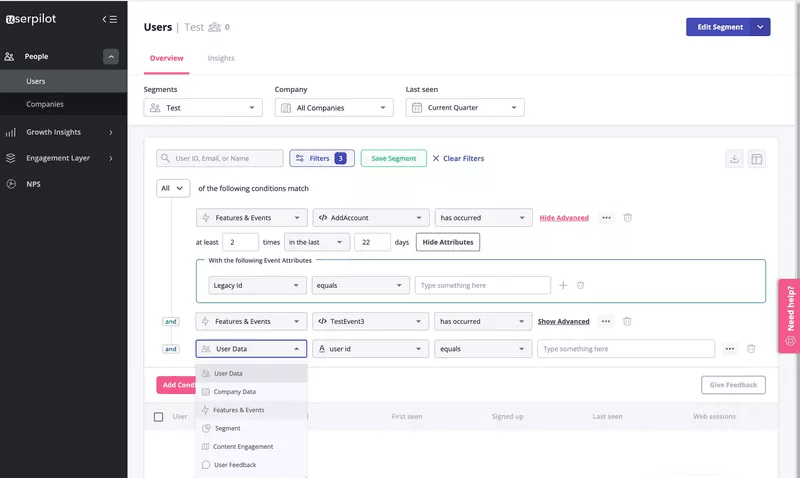
Use incentives to motivate customers
Your customer’s time is extremely valuable. While some of your users may spare the time to accept your review request, there may be others who require incentives to do so.
You can offer your customers discounts, coupon codes, gift cards, or any other rewards that encourage them to post reviews. To make the best use of this, make sure you ask them to give full, honest reviews.
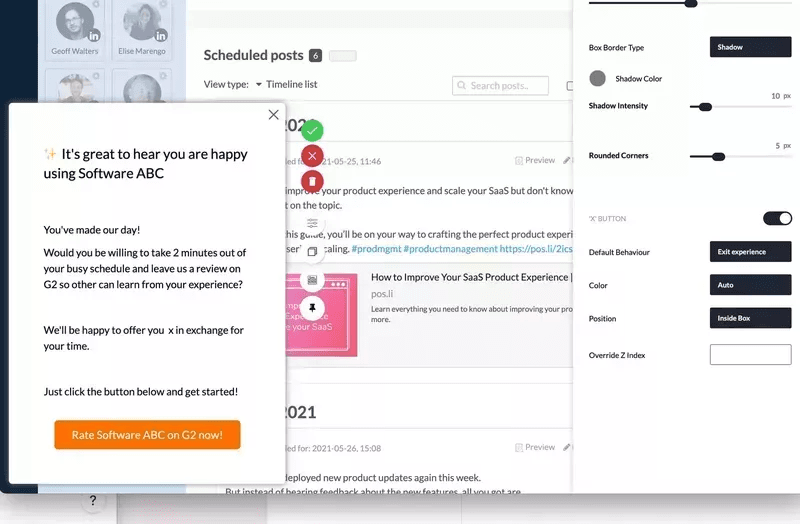
Don’t overwhelm customers with review requests
Flooding your users with review requests is counterproductive. To achieve high response rates, you’ll need to ask for reviews promptly.
It isn’t wise to send review requests immediately after user interactions, so a better approach would be to set intervals and frequency to not annoy your customers.
Here’s how it looks with Userpilot.

Act on both positive and negative reviews
If you react only to positive reviews and don’t focus on negative feedback, you’re missing out on important insights that can help you improve your product.
Angry and dissatisfied customers should be seen as opportunities rather than troubling, as they provide honest and helpful tips about your product.
It is important to address both positive and negative feedback on review sites. When you come across great reviews of your product, you should thank the user for their words.
On the other hand, when you see negative feedback, don’t ignore it. Instead, reply to them with a professional approach because you wouldn’t want to damage your brand’s reputation.
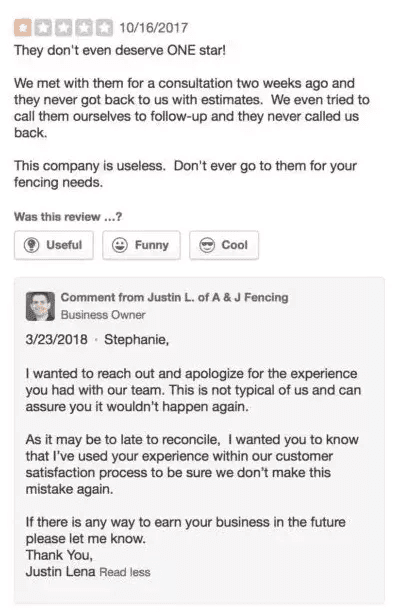
Best tools to collect customer feedback with online reviews
Customer feedback tools allow you to collect, sort, and analyze customer reviews effortlessly. They help you manage feedback from one platform, making the process easy.
Here are the two best tools to collect customer feedback.
Userpilot
Userpilot is a product growth tool that allows you to collect customer feedback using numerous microsurveys and mobile surveys, such as Customer Effort Score surveys, NPS Surveys, and CSAT surveys. You can set these surveys up very quickly using the various available templates.
It comes with a built-in analytics feature, providing you with a clear summary of the survey results. You can also segment the results into different categories, enabling you to design more effective marketing strategies for different user groups.
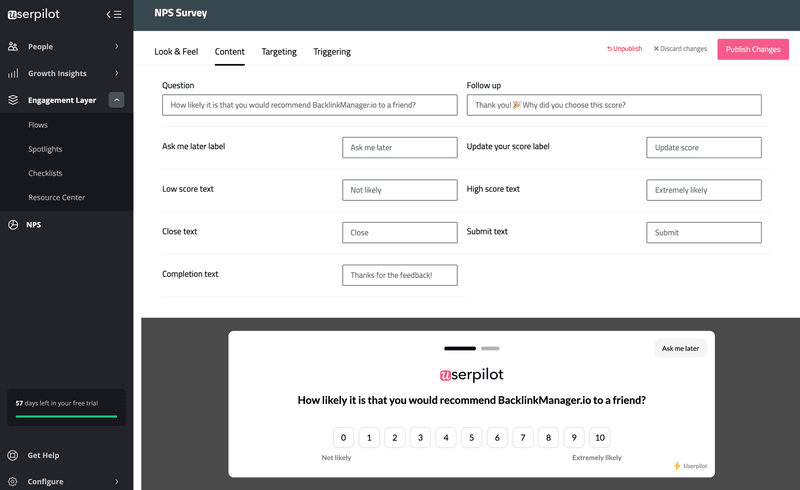
Getting started with Userpilot is very easy, and you can use all the features without having to manually code anything.
You can get a free trial to see if it meets your needs. Afterward, you can choose from three subscription packages. They start from $299 for the Starter, billed annually, custom for the Growth, and custom for the Enterprise package.
Usersnap
Usersnap is a dedicated customer feedback software for SaaS businesses. It allows you to capture feedback effortlessly and get valuable insights from your users.
Its core features include user research, managing feature requests, in-app screen captures, surveys, bug testing, and customer experience measurement with ratings and feedback insights.
Usersnap has four pricing plans: Startup starts from $98, Company from $188, Premium from $327, and Enterprise from $945.
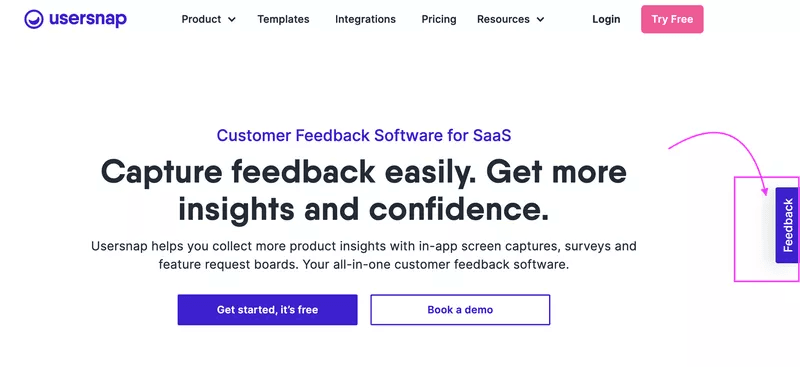
Conclusion
Customer reviews are one of the most effective ways to improve your customer acquisition and retention rates. They contribute to developing your online reputation, greatly increase brand trust, and offer the type of social proof required to affect consumer behavior.
From this angle, learning how to ask for customer evaluations and guarantee a consistent flow of more and better reviews makes commercial sense.
Thinking of how to ask for customer reviews and get high response rates? Get a Userpilot Demo and see how you can create different types of surveys to collect reviews code-free.






